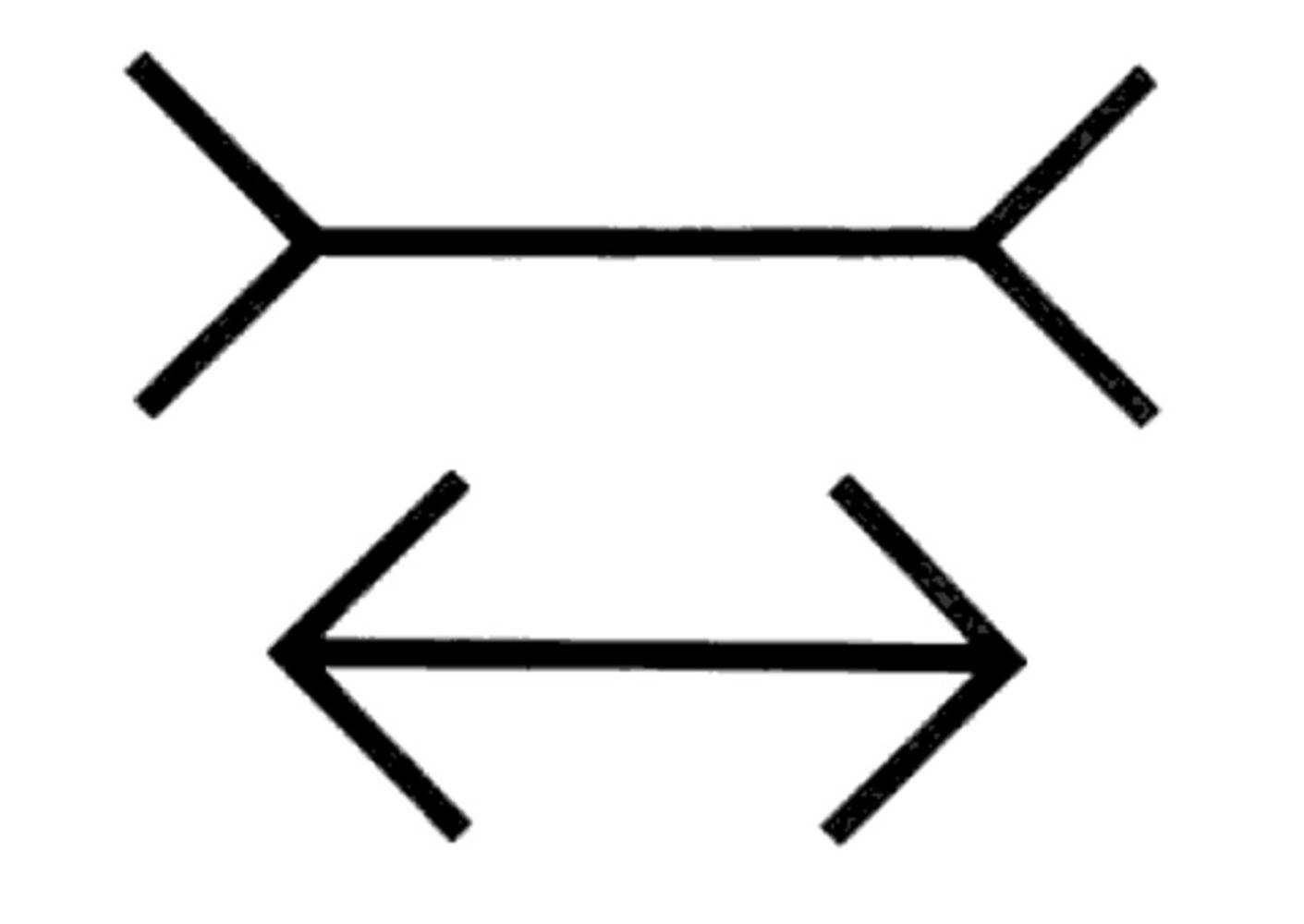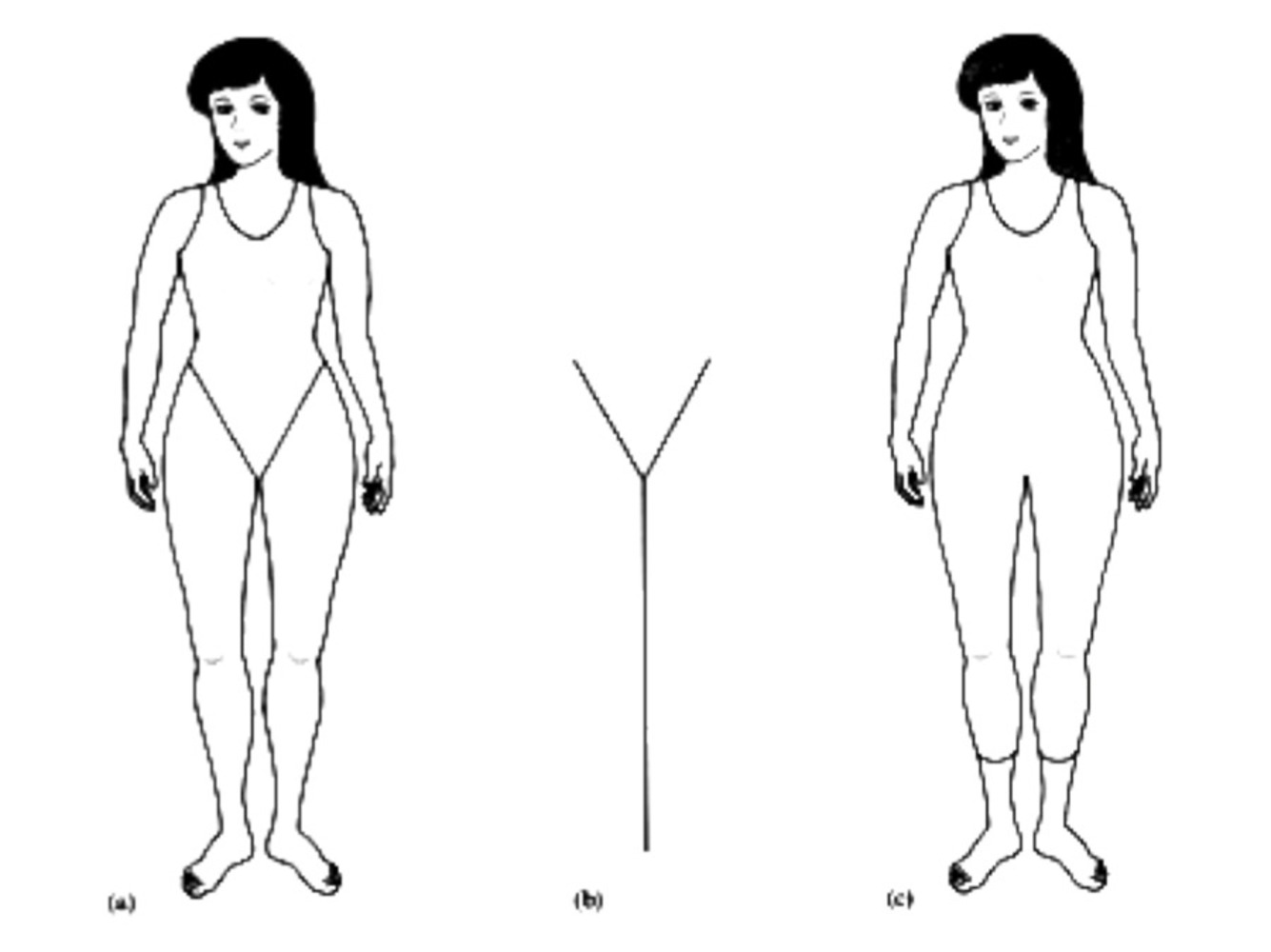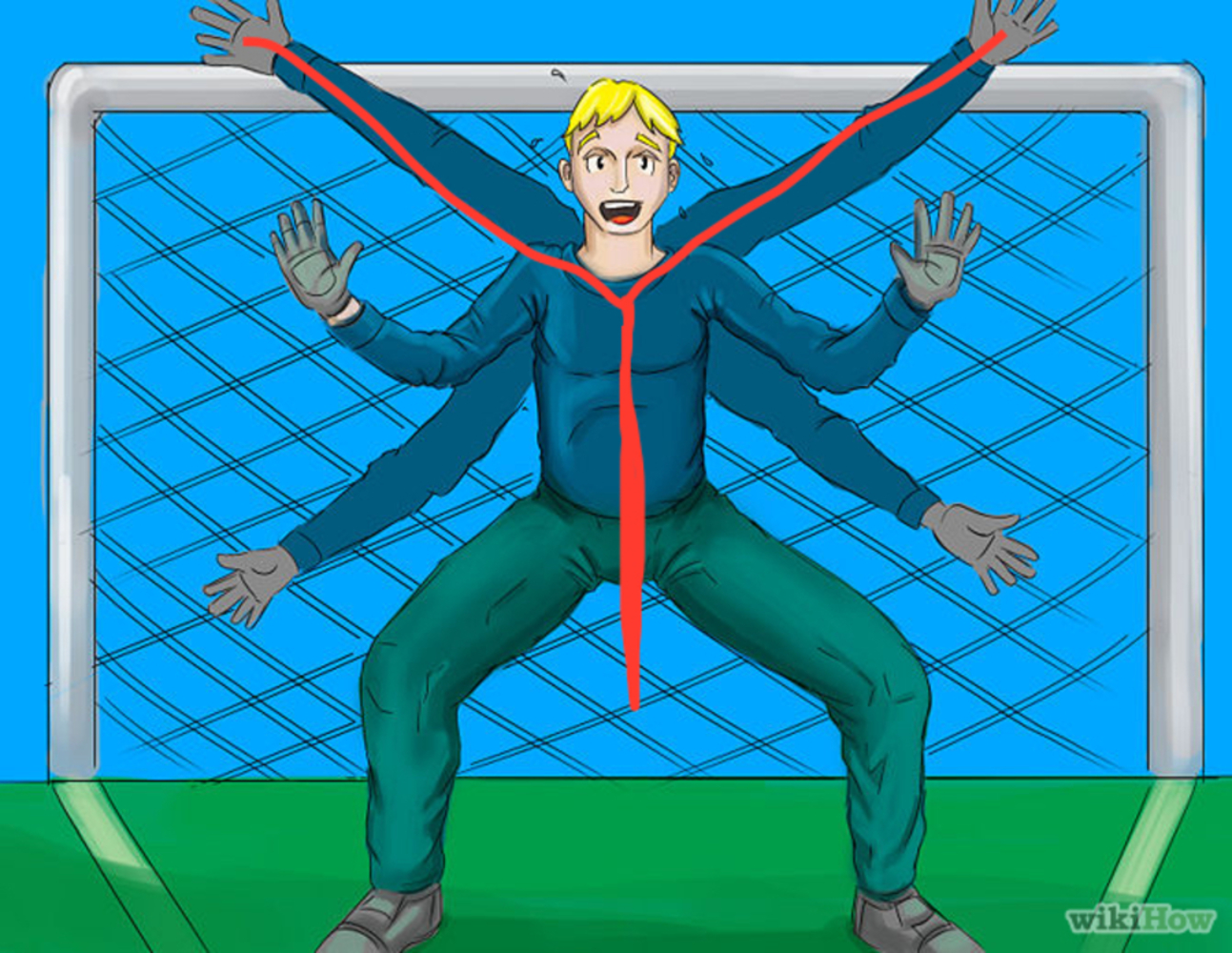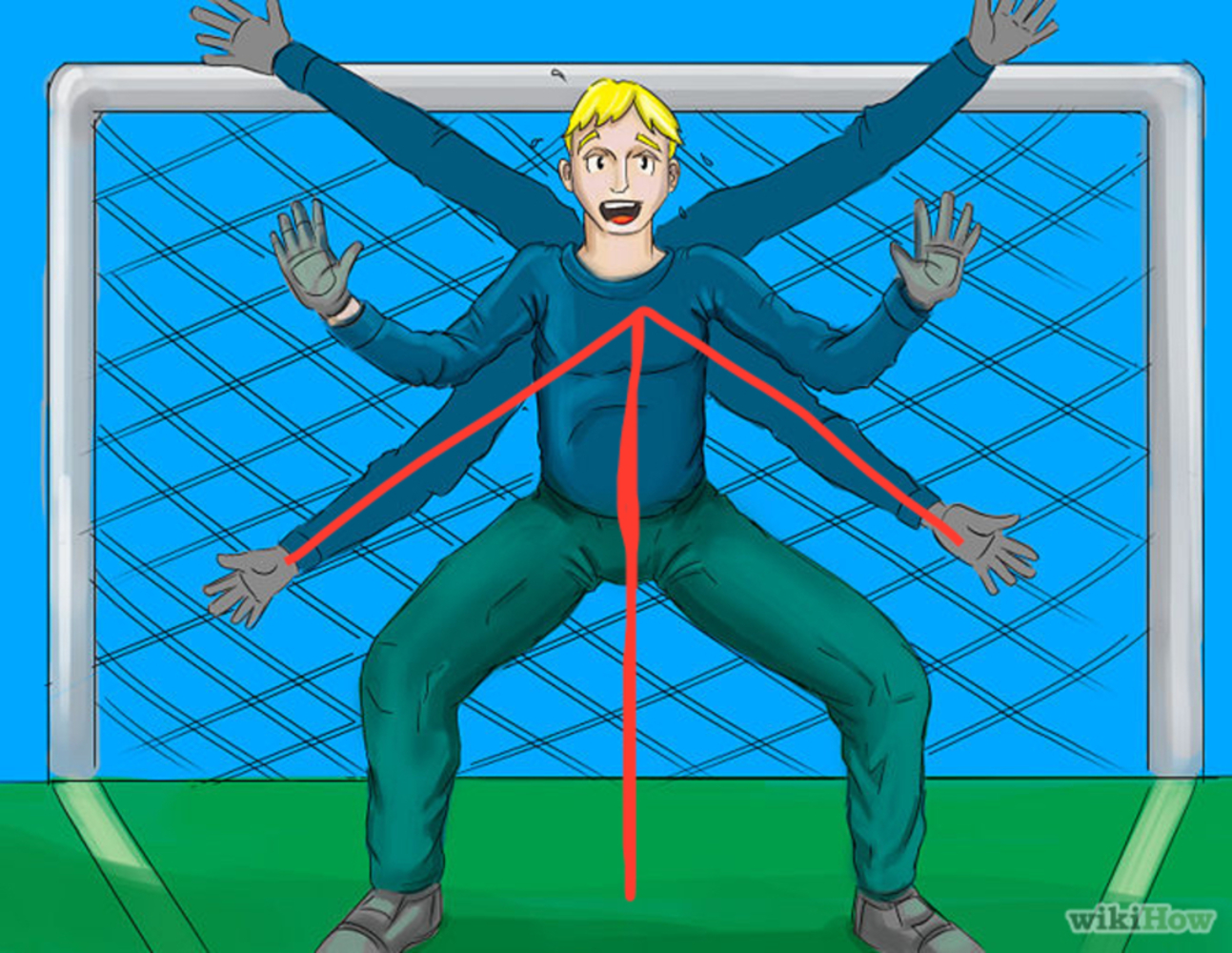Perceptual Illusion:
Muller Lyer Illusion
Muller Lyer Illusion is a visual illusion that involves arrows. It was devised by Franz Carl Muller-Lyer in 1889. The illusion is about our wrong judgements on the length of lines. Lines with arrows pointing outwards are usually considered shorter than those with arrows pointing inwards. The explanation for this effect is related to our 3-dimentional space perception. How human beings perceive the distance, the 3D relationship between objects are mostly based on the relative sizes of those objects. Our minds will take depth cues on the lines and then project different lines into different places in our in-mind 3d models. For viewers, the angles pointing inwards are usually considered as closer. Therefore, those lines, from people's point of views, are "actually" shorter because they appear as the same length. As for drawing, if artists paint different objects with different size and different angles, artists can create the effects that objects on the painting are of different distances from viewers, even though those painted objects are on the same platform-the painting.



